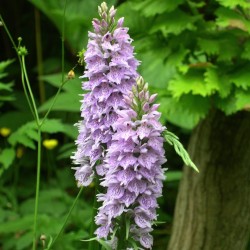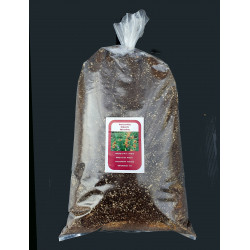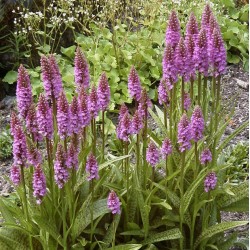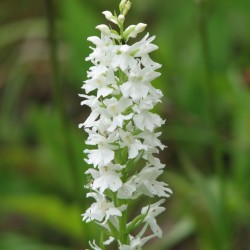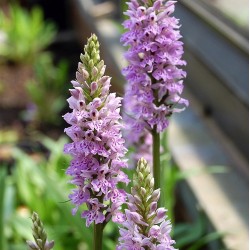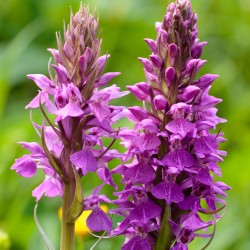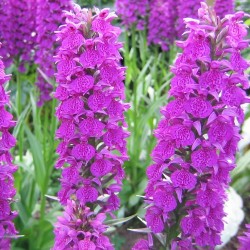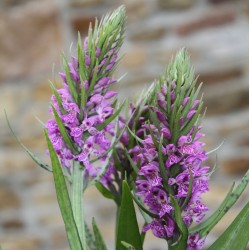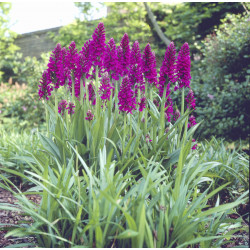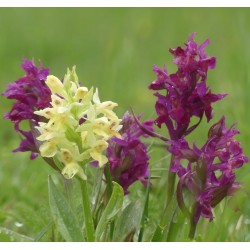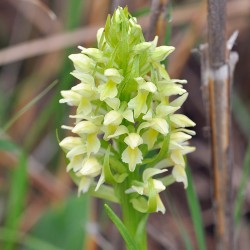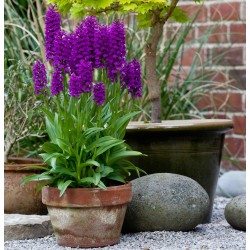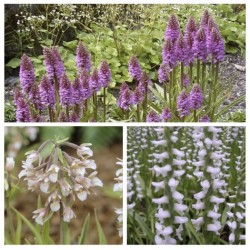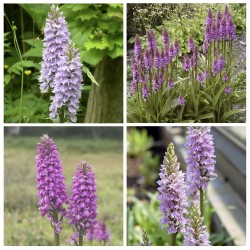No products
Product successfully added to your shopping cart
There are 0 items in your cart. There is 1 item in your cart.
Categories
Filters
FAQ
Dactylorhiza are terrestrial orchids, widespread in the wild in many parts of Europe. They are very hardy and have excellent frost resistance.

Dactylorhiza
Dactylorhiza fuchsii - Common Spotted-Orchid
This is the UK native wild Common Spotted which grows in neutral to alkaline soils which are often damp. Can be grow in grassland, the garden or a pot. It is a good beginners orchid as it will usually bulk up fairly quickly.
14,06 €In stockSoil for Dactylorhiza, Epipactis,...
Suitable for planting 2 garden orchids This ready-to-use mixture is ideal for growing Dactylorhiza, Epipactis and Spiranthes.
14,06 €In stockDactylorhiza majalis - Western Marsh Orchid
Known as the Western Marsh Orchid this dactylorhiza is extremely variable but it does usually have spotted leaves. It does best in wet grassland areas or on the edge of ponds or streams.
15,00 €In stockDactylorhiza fuchsii ‘alba’ - Young plant
Young plant This category (young plants) includes plants that still need to be cultivated for 1 or 2 years before reaching flowering size. The plants are delivered in 9 cm pots. This is the true, white-flowered form of the Fuchs' orchid. It is a robust and generous perennial that will easily naturalise where it thrives. Plant it in rich but draining...
15,00 €Out of stockDactylorhiza maculata - Heath Spotted-Orchid
A good dactylorhiza producing an elegant flower with a broad lip. This tuberous perennial orchids is found on a range of well-drained or wet acidic soils in a wide variety of habitats, including grasslands, moors, heaths, flushes and bogs. A good choice for the edge of a pond or a damp grassland situation.
15,94 €In stockDactylorhiza pardalina
Dactylorhiza pardalina, also known as Dactylorhiza praetermissa var Junialis, is a common European orchid species. It is native to northern and central Europe (Great Britain, Denmark, Norway, Sweden, Germany, the Netherlands, Belgium, France and the Baltic republics). This terrestrial orchid is a hardy plant (up to 60 cm) with fairly dense spikes of...
15,94 €In stockDactylorhiza 'Foliorella'
The Dactylohiza 'Foliorella' orchid is a hybrid between two orchids: the Dactylorhiza foliosa and the purpurella. This hybrid is characterized by extreme vigour. In full bloom, the plant can reach a size of 60 to 80 cm and the imposing floral stalk often measures more than 30 cm. This beautiful orchid carries very luminous purple flowers. The effect in...
17,83 €Out of stockDactylorhiza praetermissa - Southern Marsh...
Dactylorhiza praetermissa, the southern marsh orchid or leopard marsh orchid, is a commonly occurring species of European orchid. It is native to northern and central Europe (Britain, Denmark, Norway, Sweden, Germany, Netherlands, Belgium, France and the Baltic Republics).
17,83 €In stockDactylorhiza purpurella - Northern Marsh...
Dactylorhiza purpurella, the northern marsh orchid, is an orchid native to Great Britain, Ireland and Denmark which grows well in many areas.
21,60 €In stockDactylorhiza sambucina - Young plant
Young plant Orchids in this category (young plants) must be cultivated for 1 to 2 years before reaching flowering size. The plants are delivered in 9 cm pots. Dactylorhiza sambucina is a short to medium sized (10 to 30 cm), stocky and robust plant with 10 to 20 flowers. It comes in two main colours, yellow or red (sometimes salmon-pink). The Elder orchid...
21,60 €Out of stockDactylorhiza ochroleucea - Pale yellow orchid
Botanical rarities The orchids in this category are extremely rare botanical varieties. Some of them are delicate plants that are less tolerant than the orchids in the 'Easy Garden' category. They are more suitable for a connoisseur audience... Dactylorhiza ochroleucea is a beautiful and rare orchid, closely related to Dactylorhiza incarnata. It is...
23,49 €Out of stockDactylorhiza foliosa - Madeira Orchid
The Madeira orchid, Dactylorhiza foliosa, is an easy to grow and rarely available plant from the Portuguese island of Madeira. It bears large spikes of purple flowers with dotted, darker lips. It is fantastic when planted en masse amongst grasses or in wild borders. Dactylorhiza foliosa grows well in full sun, moist soil and produces truly exceptional...
26,32 €Out of stock‘Wetland’ Starter Kit
This kit is specially designed for hobbyists who want to discover the world of garden orchids and who have wet areas (pond edges, banks, wet ravines, water seepage,...).This kit contains: - Epipactis palustris - Spiranthes ‘Chadd’s Ford’ - Dactylorhiza majalis - Dactylorhiza / Epipactis / Spiranthes potting soil
52,30 € 58,11 € -10%In stockDactylorhiza Orchids 4 Pack - Orchis Garden
Phytesia is temporarily offering an assortment of 4 Dactylorhiza composed of the following varieties : - Dactylorhiza fuchsii - Dactylorhiza majalis - Dactylorhiza maculata - Dactylorhiza pardalina
54,85 € 60,94 € -10%In stock


